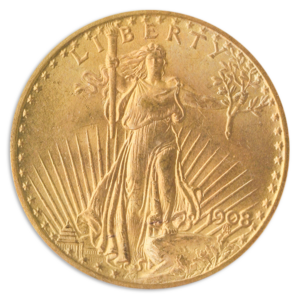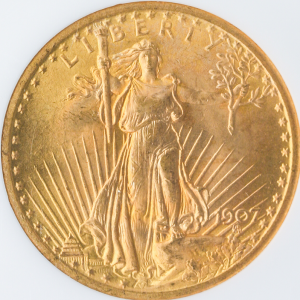1886 Morgan $1 NGC MS65
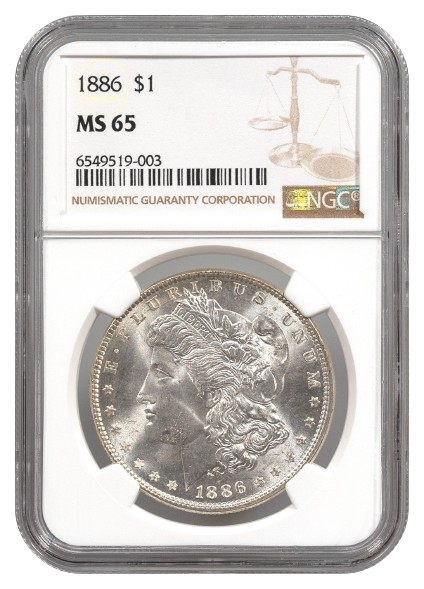


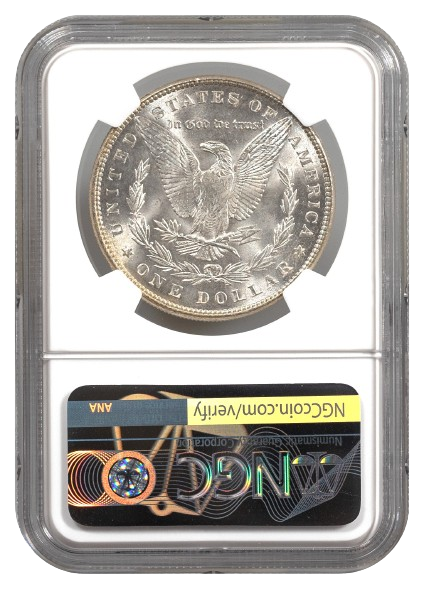

The United States Mint opened in 1792 and struck its first coin – Half Cents and Large Cents in 1793. In 1794, the Mint struck its very first silver dollar coins and they were struck annually through 1803. Considered the “King of Silver Dollars” the 1804-dated coins were struck in extremely limited numbers and were minted in 1834. In 1840, a new series of silver dollar coins was struck. Designed by Christian Gobrecht, these Liberty Seated Silver Dollars were struck until 1873.
In 1873, the Coinage Act passed that year eliminated the silver dollar coin. This Act was promoted by people who wanted to convert the United States economy to be backed by a Gold Standard. Only United States Trade Dollars, issued for use in Asia, were struck between 1873 and 1877.
The Bland-Allison Act passed in 1878, and it mandated that a new silver dollar coin would be struck and placed into circulation. It was strongly supported by farmers, bankers, merchants, and Western mining interests. created. The Act also mandated that the Secretary of the Treasury was required to purchase $2 million dollars of newly mined silver from those same Western mining interests.
These new silver dollar coins were first struck in 1878, and they were minted annually through 1904 and again in 1921.
George T. Morgan, who was the Assistant Chief Engraver of the United States Mint, created designs for both sides of this new silver dollar coin. He created an obverse design that depicted an older Miss Liberty, facing to the left. She wore a slave cap on her head, as well as a crown comprised of cotton and wheat. She also wore a headband upon which the word “LIBERTY,” had been inscribed. On the upper periphery of the obverse is inscribed “E PLURIBUS UNUM.” The date of striking the coin was minted was placed on the lower periphery. In between that motto and the date were thirteen six-pointed stars – seven on the left side, six on the right.
Morgan’s reverse design displayed an American Bald Eagle, facing to the left, and the eagle’s wings are outstretched and raised upward. Between the wings, is the motto “IN GOD WE TRUST.” The eagle is centered within an olive wreath. It holds three arrows in one talon, and an olive branch in her other. On the upper periphery is “UNITED STATES OF AMERICA,” and the denomination “ONE DOLLAR,” is displayed on the bottom.
This coin was dated 1886, and it was struck at the Philadelphia Mint, so there is no mintmark underneath the eagle. The Philadelphia Mint struck an exceptionally substantial number of silver dollar coins that year – 19,963,000.
This coin is graded as MS65 by the Numismatic Guaranty Corporation (NGC), one of the three most popular and desirable grading services in existence. Coins graded as MS65 or higher are considered as ‘investment quality.”
Simply click the “Add to Cart” button now or call 1-800-880-4653 to speak to one of our highly trained numismatists, who will be happy to assist you.
In 1873, the Coinage Act passed that year eliminated the silver dollar coin. This Act was promoted by people who wanted to convert the United States economy to be backed by a Gold Standard. Only United States Trade Dollars, issued for use in Asia, were struck between 1873 and 1877.
The Bland-Allison Act passed in 1878, and it mandated that a new silver dollar coin would be struck and placed into circulation. It was strongly supported by farmers, bankers, merchants, and Western mining interests. created. The Act also mandated that the Secretary of the Treasury was required to purchase $2 million dollars of newly mined silver from those same Western mining interests.
These new silver dollar coins were first struck in 1878, and they were minted annually through 1904 and again in 1921.
George T. Morgan, who was the Assistant Chief Engraver of the United States Mint, created designs for both sides of this new silver dollar coin. He created an obverse design that depicted an older Miss Liberty, facing to the left. She wore a slave cap on her head, as well as a crown comprised of cotton and wheat. She also wore a headband upon which the word “LIBERTY,” had been inscribed. On the upper periphery of the obverse is inscribed “E PLURIBUS UNUM.” The date of striking the coin was minted was placed on the lower periphery. In between that motto and the date were thirteen six-pointed stars – seven on the left side, six on the right.
Morgan’s reverse design displayed an American Bald Eagle, facing to the left, and the eagle’s wings are outstretched and raised upward. Between the wings, is the motto “IN GOD WE TRUST.” The eagle is centered within an olive wreath. It holds three arrows in one talon, and an olive branch in her other. On the upper periphery is “UNITED STATES OF AMERICA,” and the denomination “ONE DOLLAR,” is displayed on the bottom.
This coin was dated 1886, and it was struck at the Philadelphia Mint, so there is no mintmark underneath the eagle. The Philadelphia Mint struck an exceptionally substantial number of silver dollar coins that year – 19,963,000.
This coin is graded as MS65 by the Numismatic Guaranty Corporation (NGC), one of the three most popular and desirable grading services in existence. Coins graded as MS65 or higher are considered as ‘investment quality.”
Simply click the “Add to Cart” button now or call 1-800-880-4653 to speak to one of our highly trained numismatists, who will be happy to assist you.
| Specifications | |
| Year | 1886 |
| Denomination | One Dollar |
| Grade | MS65 |
| Country | United States of America |
| Grading Service | NGC |
| Weight | .77344 |
| Fineness | .900 Fine Silver |
| Diameter | 38.1 mm |
| Manufacturer | The United States Mint |





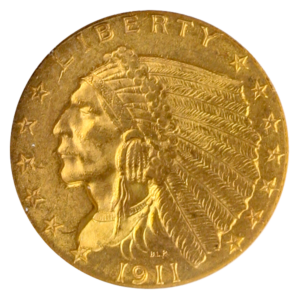
 Quick View
Quick View